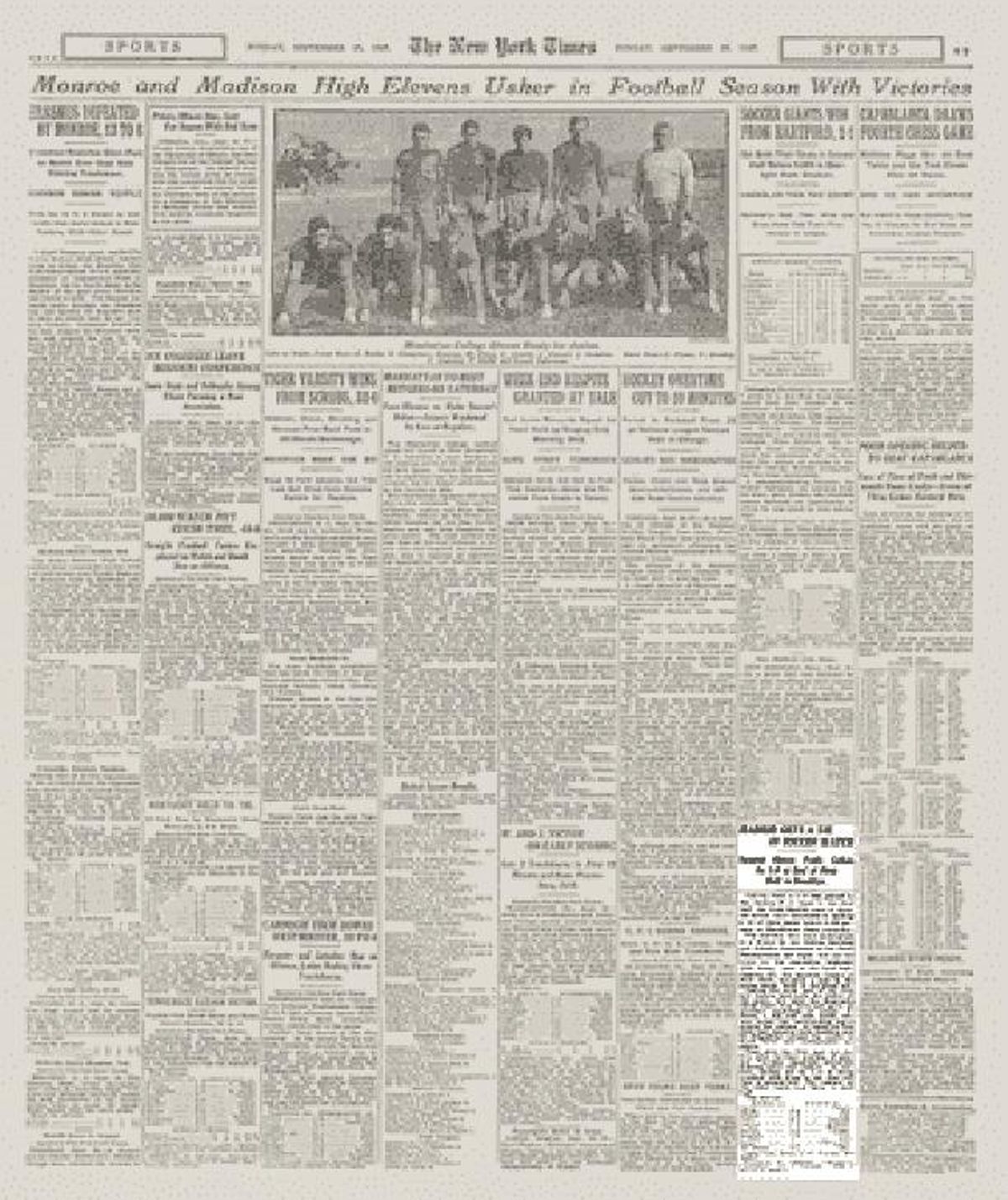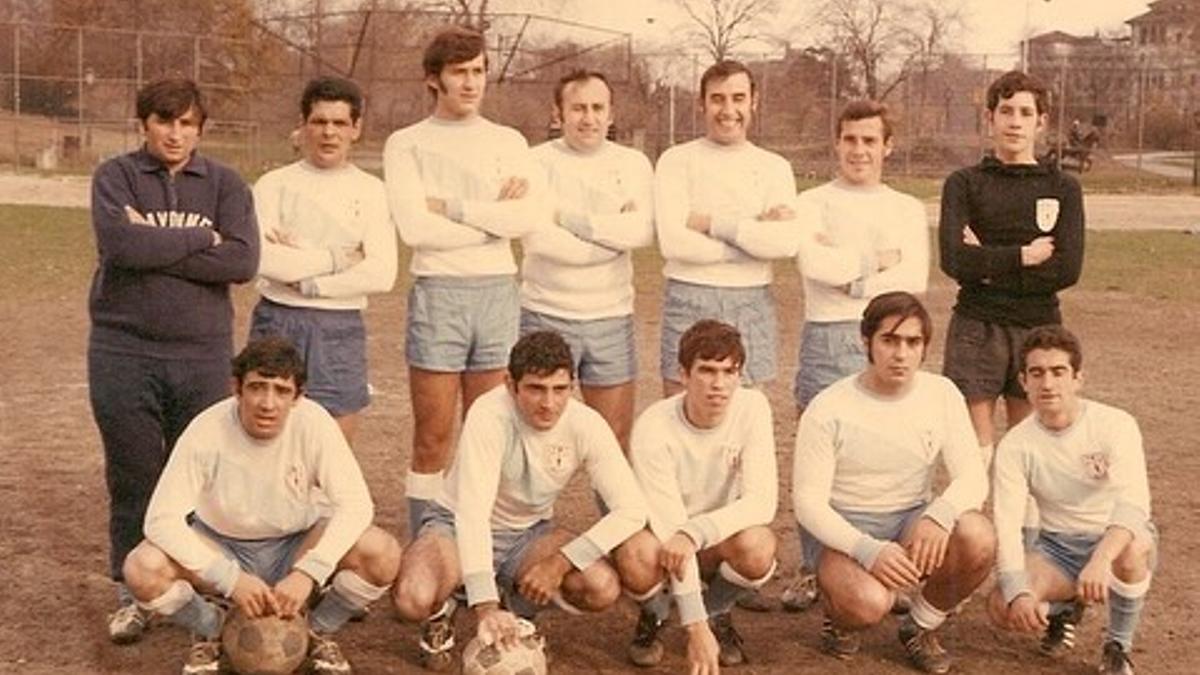That Real Madrid and other European teams play on American soil has ceased to be a novelty. The tournaments and tournaments such as the Club World Cup or the World Cup next year subtract any novelty glimpse. But there was a time when jumping the puddle was a naval odyssey that almost no team did.
The white team traveled in 1927 to New York, next to New Jersey, where it will seek to win the Pioneer FIFA tournament. There he faced Galicia SC, whose heir is today the NY Galicia, capable of taking out a draw that supposes the beginning of an American series with dozens of matches that arrives until today.
In the New York Times: “Galicia SC 1 – 1 Real Madrid”
“The original Ny Galicia was founded in 1922, which makes him older than Celta, created in 1923. As a fan of Deportivo I love to remind my family and Celtic friends. It was a team composed of Galician and Spanish players. In 1927, the club played a historic friendly against Real Madrid, achieving a 1–1 draw. New York Times He wrote about it, ”says Marcos Roel, who relaunched the team in 2007 and has been involved with him since then.

The New York Times page that tells the celebration of Galicia SC – Real Madrid. / Provided
Roel's story is that of so many children of emigration. His parents are from Cambre (A Coruña) and Tomiño (Pontevedra). Practically, every summer returns to the earth that defends the NY Galicia and also every weekend passes through Casa Galicia Gallega New York, founded in 1940 and remains a meeting point for the entire Galician and Spanish community. “Now I run a tourist operator specialized in showing American tourists all aspects and corners of Spain, including the Camino de Santiago. Not only did I refound the football team, but I was also a coach, player and now sponsor. Nothing fills me more with pride than talking about this project, “says Roel.
Of that first curious Real Madrid game in the US, the aforementioned press cut is preserved. “I remember having seen a photo of the team before a trip to play a friendly in Cuba, at some point between the end of the 20s and the beginning of the 30s. Unfortunately, there are not many more records. Unfortunately, every person related to that team has already died, so the archives are largely lost,” says the man who has worked to recover the memory of the Galicia SC.
The other Galician teams around the world
It is not the only case of Galician team abroad. In London the FC Deportivo Galiciafounded in 1968 by the community that had to leave home. Same example as the GALICIA ESPORTE CLUB OF SALVADORBahía, in Brazil, who came to conquer several titles of the Baiano championship in the 30s and 40s. All remain active, the other way around that Deportivo Galicia, also known as Galicia de Aragua, created in Caracas and that he gained leagues, in addition to participating in the Copa Libertadores.
They are examples of the maintenance of an identity through football. Consolidated, strong entities in their communities, and who came to attract first level players like Joe Gaetjens. The author of the Historic 1-0 of the US team against England in the 1950 World Cup in Brazil watched the Galician shirt after he was convinced 'Díaz' Díaz, a cazatalentos that He took it to a team that, at that time, was called Brookhattan-Galicia.
This team stopped competing for problems to find funds, but in the 1968/1969 season, the youngest of the Galicia house in New York rescued the project, as would later do the Marcos Roel's working group. “After getting more and more success, the team began to recruit non -Spanish players. Then, at some point in the 40s, He merged with another local football club, losing in part his name and also his relationship with Galicia and Spainby becoming a semiprofesional team. Later, towards the end of the 40 or early 50s, the team disappeared completely, “says Roel, about the rugged story of the Galician phoenix '.
The resurrection of NY Galicia that took place in 2007
In the 80s and early 90s, Casa Galicia, such as many cultural institutions, went through economic difficulties and lack of partners, and could no longer maintain a football team. At the end of the 90s and the beginning of the 2000, the company began a renewal stage, growing exponentially with new partners and recovering former partners.
Thus, the NY Galicia flourished again. “In 2006 or 2007, I was the president of youth of society. The president of that time asked me to create a football team, since there were many young people in the club, composed, both for newly arrived immigrants as children of immigrants who had grown up within society. We decided to recover the old name of NY Galicia“, recounts on the resurrection process.
From this last rebirth, ROEL has been played we have played in the Cosmopolitan Soccer League, which is the oldest football league in all of the US. “Throughout the last 18 years, we have lived from everything. Seasons where we fight in the League, and others where we were quite bad. Years with many players, and others in which it was hard to find enough to assemble the team. Just before the pandemic, a new wave of soccer players and immigrants in Spain arrived, which were fundamental for the development and success of the club. Many of them were sacrificed and offered as volunteers, which gradually began to give more positive results, “explains the Ny Galicia component.
In Second Division of the oldest League in the US
It is the story often repeated of a community that works for its roots. “Upload to Second Division also attracted more players interested in a more competitive league. The team, in addition to playing in the main league, disputed summer, winter and weekly leagues, where they also had successes and won trophies. In our first campaign in second we ended in fifth place and lost on penalties in the semifinals. In our second season, which has just finished, we finished third and we lost the final of the playoffs. We hope that the next season we will win the division and ascend directly to Primera, “says Roel.
The current Ny Galicia team, according to those responsible, “continues to represent not only to Galicia, also to other Spaniards and people who, although they are not Spanish, have a link with the country: either because they have ancestry, they married a Spanish or Spanish, or lived there at some point. The idea is to continue with this club, which is a great representation of Casa Galicia “. The legacy of the club that managed to get a tie to Real Madrid in his first adventure in the US, where Galician identity is more alive than ever.
